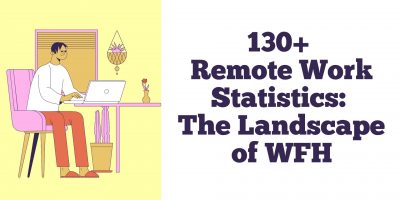
25 Time and Attendance Statistics Employers Need to Know
Gain vital time and attendance insights to manage workforce punctuality and productivity effectively.

The global pandemic shed light on remote work and made it clear that companies need to invest in technologies that make working remotely possible and manageable. These remote work statistics tell us that this new way of working is one-way people will move forward in the workplace.
71% of Spanish employees sometimes use their smartphones for remote working, compared to 38% in the U.K. and 27% in Germany. (Vodafone Global Survey*, 2016)
Only 8% of U.K. companies surveyed would be concerned about employees not working as hard due to flexible working arrangements, compared to 33% in Hong Kong. (Vodafone Global Survey, 2016)

According to one of the most extensive global surveys of its kind, conducted with 8,000 employers and employees across three continents, 75% of companies have now implemented flexible working policies allowing employees to vary their working hours and use the latest technologies to work from home or on the move. (Vodafone Global Survey, 2016)
Currently, 61% of respondents use their home broadband subscription to access business apps, while 24% utilize a mobile data connection through their smartphone, tablet, or laptop with a broadband adapter. (Vodafone Global Survey, 2016)
Employees would not work as hard if they were permitted to use flexible working patterns and technology, according to 22% of respondents. (Vodafone Global Survey, 2016)

According to 55% of firms that do not have remote work in place, employee morale would increase if flexible working rules were implemented. (Vodafone Global Survey, 2016)
According to 20% of respondents, their organization has not yet established a flexible working policy. 33% felt it would be inappropriate for their organization’s culture. 30% were concerned about tension between employees who worked flexibly and those who did not. 25% thought that work would be unevenly allocated across flexible and non-flexible employee groups. (Vodafone Global Survey, 2016)

Remote work is a popular advantage for prospective employees. As we can see from the remote work statistics, the company becomes a desirable place for future candidates when remote work is an option.
* We’re using an archived version of the page as the source.
Browse our curated list of vendors to find the best solution for your needs.
Subscribe to our newsletter for the latest trends, expert tips, and workplace insights!

Gain vital time and attendance insights to manage workforce punctuality and productivity effectively.

In 2025, employee detachment is quietly draining workplace energy. Explore how leaders can step in to re-engage their teams, reignite motivation, and rebuild a sense of purpose.

In an era of unprecedented corporate power, can we still safeguard the dignity of every worker amid the relentless quest for profit?

Revitalize your approach to remote work with innovative virtual programs and strategies, seamlessly uniting in-office and remote teams for a comprehensive well-being experience.
Used by most of the top employee benefits consultants in the US, Shortlister is where you can find, research and select HR and benefits vendors for your clients.
Shortlister helps you reach your ideal prospects. Claim your free account to control your message and receive employer, consultant and health plan leads.